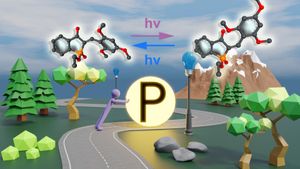Efforts to maximize the use of historical museum specimens for genomic research have taken a significant leap forward, thanks to new comparative studies of DNA extraction and library building methods. Understanding how to effectively recover and process degraded DNA from collections can greatly aid biological conservation efforts unable to access fresh specimens. A recent study led by researchers from the Natural History Museum, London, demonstrates just how museum collections, which house millions of specimens, can meet the demand for high-quality genomic data.
DNA barcoding, increasingly utilized for species identification and biodiversity assessments, often relies on reference libraries composed of accurately identified genetic material. Unfortunately, constructing these libraries poses logistical challenges, especially when it involves handling historical samples, whose genetic material may have degraded over time. Degradation can lead to low-quality data, hampering scientific discoveries.
The study focuses on testing and comparing several DNA extraction methods and library building techniques, aimed at optimizing high-throughput protocols for genomics. Specifically, the researchers examined methods known to be effective for handling low-quality DNA, identifying the best protocols for scalability and cost-efficiency.
The tests highlighted the Santa Cruz Reaction (SCR) library build method as particularly effective, retrieving more degraded DNA from museum specimens than its counterparts. While other extraction techniques exhibited comparable DNA yield, the SCR method entered the spotlight due to its cost-effectiveness and straightforward implementation, making it highly suitable for laboratories needing to process large numbers of samples. With this method, the researchers disclosed the potential for institutions worldwide to adopt and apply similar protocols to their collections.
"Our findings reveal how important laboratory protocols are for maximizing data yield, especially when working with degraded specimens," said the authors of the article. This finding is instrumental, as it not only presents advancements in methodology but also posits concrete steps for future research incorporations.
Within the study, two DNA extraction methods were refined for performance, incorporating glass beads and silica columns, which helped achieve optimal DNA recovery from specimens. The method utilizing glass beads not only recovered DNA efficiently but also proved beneficial for high-throughput applications. Three different library building methods were then analyzed, with the SCR approach coming out as the least expensive and most effective based on the quality of sequence reads they produced.
The results showcase the SCR library build's advantage, as libraries using this technique demonstrated significantly greater endogenous DNA content compared to those constructed through other methods. Libraries prepared using SCR allowed for greater DNA complexity, which is particularly advantageous when working with ancient or fragmented samples.
To facilitate widespread adoptions of these findings, the article also outlines optimized protocols for going from sample retrieval to sequencing, enabling laboratories positioned to collect genomic data from museum specimens effectively. Improvements and protocols suggested aim not only to increase data yield but also to streamline the processes, emphasizing the feasibility of scaling these methods for practical use.
A considerable aspect of this study is highlighted by the successful implementation of the SCR method at scale by the authors, processing over 40 plates of samples and speeding up the data generation to yield over 300 billion paired-end reads within one year. This massive scale reaffirms the significance of adopting such protocols to empower researchers worldwide.
Moving forward, this research solidifies the promise of museum collections as powerhouse repositories for biological data. The advancements clear the pathway for genetic studies and conservation initiatives, increasing our capacity to identify and understand biodiversity on both taxonomic and evolutionary scales. The methodologies devised here hold the potential to fuse past collections with cutting-edge scientific inquiry, transforming how scientists interact with historical biological data.
The Santa Cruz Reaction methodology not only highlights effective techniques for addressing challenges posed by degraded DNA but also encourages the reinvigoration of museum specimens for modern genomic studies. By optimizing the link between historical collections and contemporary genomics, researchers can build stronger databases for future ecological assessments.
Given the fundamental role of genetic analysis for biodiversity monitoring and conservation efforts, continuing to refine and disseminate these methodologies will help integrate museum specimens more deeply with current genetic studies, facilitating efforts to preserve our planet's biodiversity.



